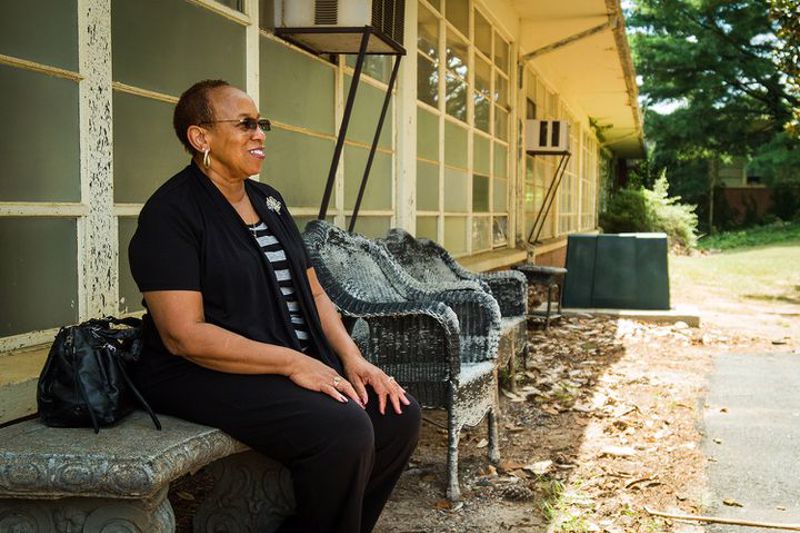GARREN NEWS
50 years ago, segregated school in North Fulton was ‘my bond, my family’

Sandra Taylor enters a Fulton County Schools maintenance building and smiles. Then her eyes begin to fill with tears. She pauses inside a large room filled with stacks of lumber, machinery, dust. But Taylor sees something else: remnants of a cafeteria and a small stage, a gathering place in a school where she played flute, developed an affinity for poetry and formed lifelong bonds with teachers and classmates.
Taylor, now 67, attended school at this building on Kimball Bridge Road in Alpharetta when it was the Bailey-Johnson School, a segregation-era school for African-American students. She graduated 50 years ago in 1967 with the school’s last senior class. On Saturday, Taylor and dozens of classmates will gather for a reunion at what was once the only high school in North Fulton that would enroll them.
On a recent sunny afternoon, Taylor and Charles Grogan, who graduated from the Bailey-Johnson school in 1965 and who is known as a local historian, joined AJC reporters and videographers for an informal tour inside a building steeped in memories.
“What I really appreciate about Bailey-Johnson is that the teachers were interested in the students — in their well-being, in their learning and them being good human beings. They nurtured us like second parents. There was an environment where you comfortable and felt a bond,” said Taylor, who lives in the Decatur area.
Bailey-Johnson was as much a safe haven as it was a school for black children during the 1950s and 1960s. In 1966, Taylor had the option to attend her final year of high school at Roswell High School during the beginning of integration. “I didn’t want to go to a school where I didn’t know if I would be welcomed or not,” she said. “Bailey-Johnson was my school, my teachers, my pride, my bond, my family.”
But some of her classmates made the switch. And in the end, a small school with fewer than 15 kids in the graduating class shrunk even more. There were only eight kids in Taylor’s graduating class, so small they decided not to produce a yearbook.
Bailey-Johnson School began in 1950 as the Alpharetta Colored School. Built on a hilltop on Kimball Bridge Road, it consolidated three smaller schools that served African-American students in North Fulton – in Roswell, Alpharetta and Sheltonville (near today’s Johns Creek). Before 1950, African-American students in North Fulton didn’t have the option of continuing their education after 7th grade. Students wanting a high school education had to commute to one of two schools in Atlanta. Alpharetta Colored School promised to change that. The new school offered classes from first through 12th grade. The school was small but modern, and was equipped with a cafeteria/auditorium, a library and seven classrooms. A 1950 report in the North Fulton Herald reported that the school’s faculty all had college degrees and that the principal was working on her masters.
In 1953, a year before the school graduated its first students, parents successfully petitioned to change the name of the school to Bailey-Johnson. George “Hard” Bailey was the name of the Alpharetta resident who donated the land for the school and Warren Johnson, of Roswell, was a proponent of African-American education.
Bailey-Johnson saw several expansions in its first years: four new classrooms in 1953, a gym in 1958. Although the student body was small, the school fielded teams in basketball and track and field. Its boys basketball squad won the Division B State Championship in 1965. For the 1966-67 school year, high school-aged students at Bailey-Johnson were allowed to transfer to the newly integrated Roswell High School, although most chose to stay at Bailey-Johnson. Even so, it would be the school’s last year.
Parents and faculty fought the decision to close Bailey-Johnson — a result of federal mandates to integrate schools — arguing that its amenities were as good or better than some of the white schools’ in the area. In that final 1966-67 school year, Bailey-Johnson had 166 elementary and high school students and 13 faculty.
By Helena Oliviero - The Atlanta Journal-Constitution
Pete Corson - The Atlanta Journal-Constitution
Read more here.


